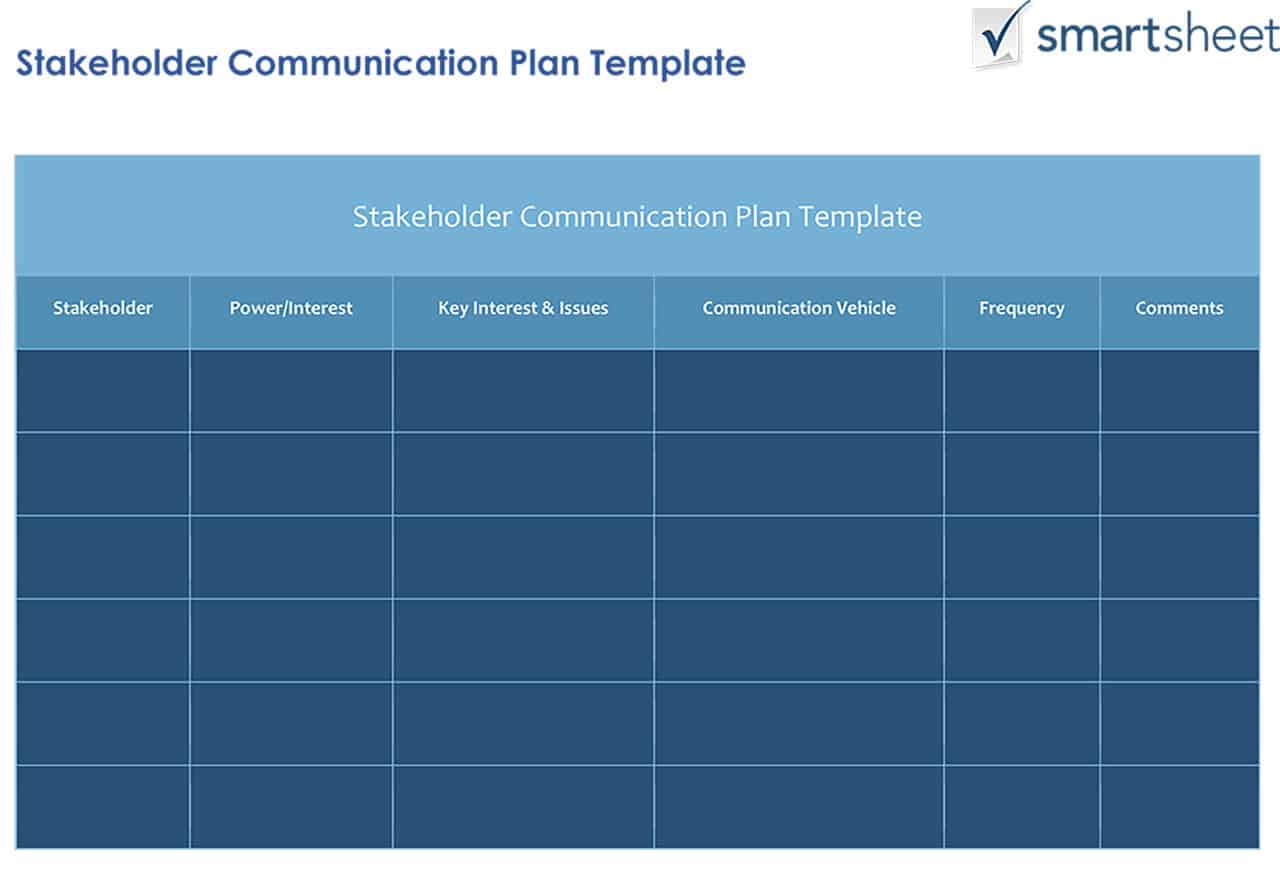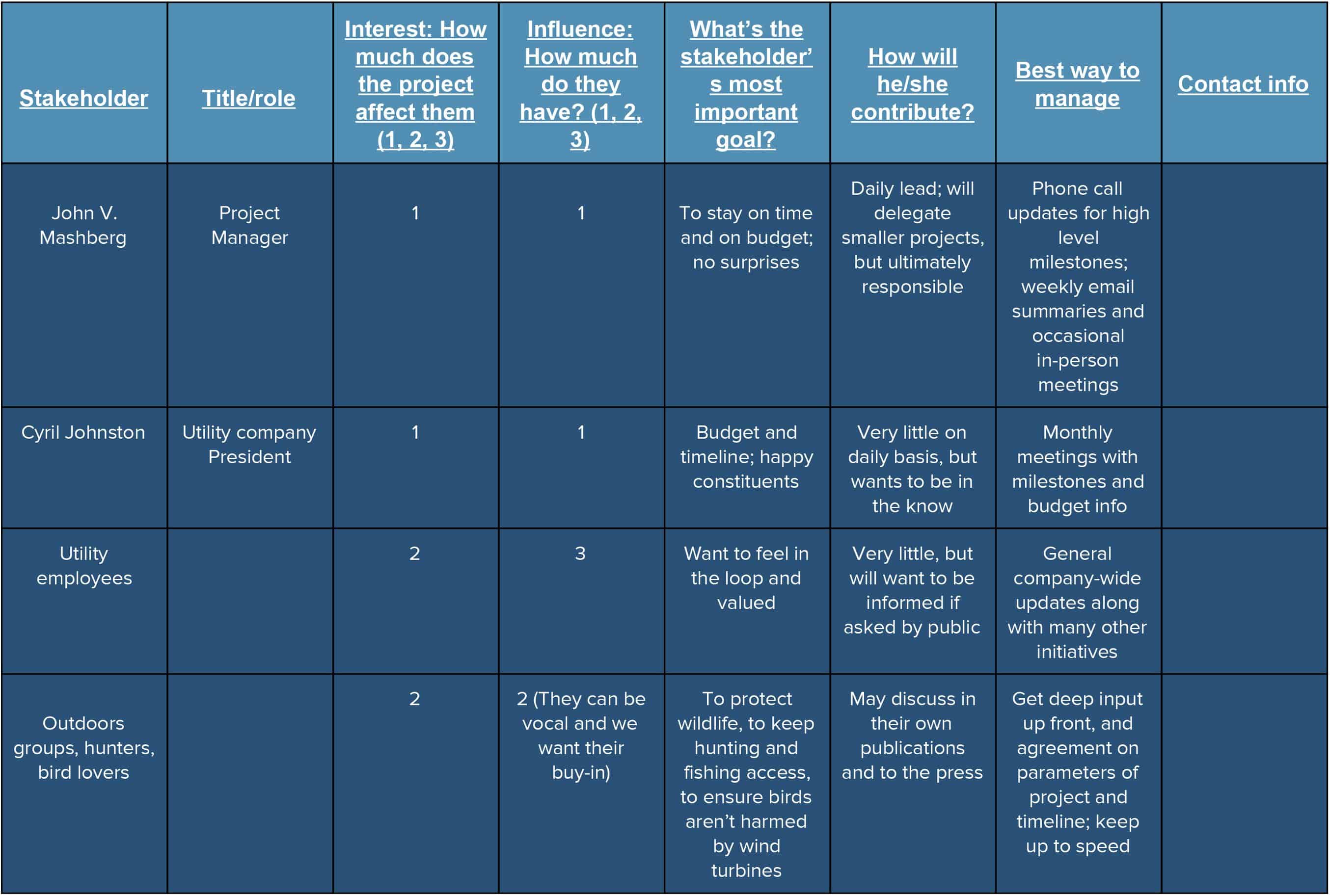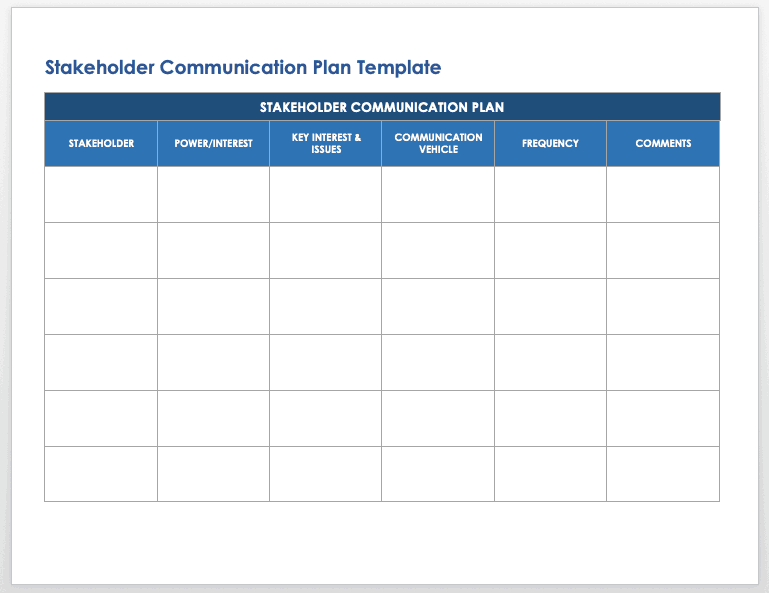Definitions: What Are Stakeholder Management and Stakeholder Communication?
For optimal results in any project, it’s key to identify your most important as well as extended stakeholders. Once you have identified your key players in a stakeholder matrix, you can weigh their respective needs and influence and begin to assess how to manage them. In larger projects, you may want to list “extended” stakeholders, who, under stakeholder theory, may include company employees, customers, vendors, and more.
Stakeholder communication is a component of stakeholder management, though it is not the only one. Keeping the right people in the loop - at the right stages of your project, with the right amount of detail - is critical to making stakeholders feel valued, involved, heard, and appreciated.
What Are Stakeholder Management and Stakeholder Communication Plans?
After you identify your key stakeholders (and extended ones if desired), it’s important to capture how best to manage them. A stakeholder management plan can be a simple grid or spreadsheet that lists the stakeholders along one axis and their points of interest and influence along the other. In the individual boxes, note key milestones or deliverables that a stakeholder might have special interest in, as well as financial and emotional needs tied to the project.
The project manager or account director may create and maintain the stakeholder management plan, but the plan would likely be shared among the project team, especially among those who meet regularly with stakeholders. In some cases, the plan is also shared with top managers. A stakeholder management plan is not typically shared with the actual stakeholders listed.
A stakeholder communication plan typically grows out of the information and findings in the management plan. It should list the key stakeholders who need to receive communications, including type, frequency, and detail. It may make sense to write the communications plan immediately after the management plan, or as two parts of one plan. Again, stakeholders will not typically have access to the communication plan, though over time may become accustomed to receiving the output of your plan - for example, their bi-weekly email update on the project mentioned in your plan.
Who Is a Stakeholder? Anyone with a Vested Interest in the Project
For more detailed information about stakeholders, read our stakeholder analysis and mapping article and our stakeholder theory article. To get started, here is a brief list of potential project stakeholders:
- External: The client, including the main client team, their managers, and their division director. In an agency environment, there are typically one or two stakeholders identified as a liaison from the client project team. On a company project, there will be a small number of critical leaders who are considered the key stakeholders.
- Internal: The project team, including contractors and vendors, as well as top management, resourcing directors, accounting department members, and others who want to see the project run efficiently and profitably.
- ‘Expanded’ Stakeholders: These may include the industry evangelists, customers, employees, manufacturers, vendors, environmental and other community activists, and more. Maintaining strong, consistent communications with all types of stakeholders ensures a smooth project with much more buy-in and better public relations.
Vivian Kloosterman, Managing Director at VK Consulting Environmental Engineers Ltd. in New Zealand, and founder of the online business school Continuing Professional Development, which offers courses on stakeholder management, says, “It’s critical to allow for evolution of your project - and the stakeholders. Some stakeholders may be deeply involved early on, and then ‘drop off’ in later stages, while others may join the project long after it’s underway.”
For instance, Kloosterman adds, a building project may involve architects and city planners heavily at first, and much less so later on, while community environmental groups - who are also stakeholders under stakeholder theory - may come into play much later, as the building is erected and begins to function.
Factors to Consider in a Stakeholder Management Plan
Once you have identified all the types of stakeholders related to your project, you can begin to plan how to manage them over the lifecycle of your project. It’s time to ask key questions, and remember to be honest when assessing your stakeholders and their needs.
Important Factors to Consider
- Who are the stakeholders who have the most influence on your project? Typically, these people tend to be mostly on the client side and include their project team, the project sponsor, and the executive sponsor.
- Which stakeholders will be most affected by your project? While this group can also include those on the client side, it may also include outside people. With a construction project, for example, those in the neighborhood, environmental activists, and potential residents of the final building could be in this group.
- How should you handle important people who actually won’t be considered stakeholders? Keep these people minimally involved since they could have the power to raise concerns or create roadblocks. These people can often be key leaders in their department, and who may need to be kept in the loop on certain things.
- Who controls the resources? These stakeholders will likely be on the client side as well as on your agency’s side. You would go to these people if you need to request a scope or budget change or require more allocated resources from a certain discipline.
- What are the top motivations and interests of your stakeholders? When deciding the driving force of stakeholders consider:
- Who has a financial stake/interest?
- Who has an emotional interest (don’t underestimate this; if this project was someone’s “baby,” keeping them happy and in the loop is critical)?
- What are the top motivations for each stakeholder?
- Who are the biggest supporters of the project?
- Who are the biggest non-supporters or naysayers?
Creating a Stakeholder Management Plan
Once you’ve completed the exercises above, you should have enough information to begin addressing the management needs of each of your stakeholders and stakeholder groups. List all your stakeholders along one side of the grid (typically the far-left column), and the factors and needs and interests along the top.
Stakeholder Management Plan Example
In this scenario, we’re creating a stakeholder management plan for a building project for a wind farm for hydroelectric power for a regional electrical utility company.
Benefits of Creating a Stakeholder Management Plan
When you use the opinions and influence of your most powerful stakeholders to help shape the project, you and the project will be better equipped for success. Best of all, you won’t waste precious time and resources communicating with those who simply don’t require the information.
In addition, your key stakeholders with the most weight and influence can help you gain resources, prioritize competing demands for resources or timelines, and clear potential roadblocks. So, keeping them happy and feeling positive about the project and its progress is critical.
Stakeholder Communications: Who Needs to Know What and When?
As you identify the stakeholders and how to manage them most efficiently, you will also start to have the beginnings of your communications plan. Begin with a simple grid filled out with the stakeholders you’ve ranked, and jot down what kinds of communications they would expect and need.
When you are creating this plan, be mindful that while high-level executives want to be kept in the loop on high-profile projects, their time is also quite valuable. A good project manager knows how to balance communications that keep someone important feeling informed, but not bogged down with granular details. Likewise, “extended” stakeholders don’t need to have access to everything about the project, as long as they feel they are being heard and have input. Here is a sample plan:
Download Stakeholder Communication Plan Template - Microsoft Word
The grid could include rounds of copy and design review as well as daily, weekly, or monthly updates on progress, budget, and upcoming tasks.
You can share the plan with your clients by saving the grid to a shared drive, and use an automated tool to send email updates to the right people at the right frequency. You might do a weekly high-level report for the clients via a personal email from the project manager. Internal stakeholders likely will also want to see a burn report - hours forecasted vs. hours spent, and time likely to be spent in the near future.
Some stakeholders (like the executive leads) may need a more formal, less frequent type of communication. Perhaps these stakeholders would prefer a monthly PowerPoint presentation that reports on the status, the features and updates that have been published, the input and feedback that’s been received to date, and so on.
While working on the communications plan, it is also helpful to think about how risk and feedback from stakeholders is handled. If there is a timeline change in the wind-farm project, for instance, which stakeholders need to know that, and in what fashion? If a big storm causes damage, again, who needs to be apprised and how? The same goes for positive events, like a local environmental group releasing a statement saying it’s pleased with the wildlife protection guidelines the utility has put in place.
Benefits of a Stakeholder Communication Plan
Keeping strong, succinct lines of communication going throughout a project is key to ensuring it runs smoothly, and to the stakeholders’ feeling of confidence in you and the project. There are other key benefits to creating, and continuing, a stakeholder communication plan:
- No more winging it. You can always be prepared and two steps ahead in planning on how and when to communicate to your important stakeholders. A project manager that looks buttoned up and strategically planned is a project manager who inspires confidence from her stakeholders.
- You can anticipate needs of stakeholders and answer them before they become issues. If you have a regular cadence for communications, you already have a vehicle for sharing news and updates, and for reducing any risks or confronting any roadblocks.
- The plan can be shared so the whole project team knows who is learning what and when. Granting access to the whole team - perhaps even creating a section for project team notes and suggestions - gives everyone a feeling of ownership and accountability.
- The plan can be adapted to account for new stakeholders, shifting goals, new phases of the project, etc. The plan exists to help you and your project team inspire the utmost confidence from the stakeholders, so make sure to create an organic document.
Smartsheet Can Help You Create Stakeholder Management and Communication Plans
From simple task management and project planning to complex resource and portfolio management, Smartsheet helps you improve collaboration and increase work velocity -- empowering you to get more done.
The Smartsheet platform makes it easy to plan, capture, manage, and report on work from anywhere, helping your team be more effective and get more done. Report on key metrics and get real-time visibility into work as it happens with roll-up reports, dashboards, and automated workflows built to keep your team connected and informed.
When teams have clarity into the work getting done, there’s no telling how much more they can accomplish in the same amount of time. Try Smartsheet for free, today.


